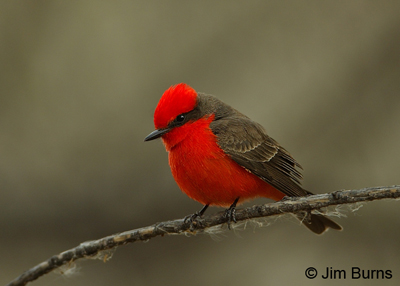Birders would probably opt for Elegant Trogon, but only they care about seeing one or know where to look. Non-birders might say Greater Roadrunner, but most of them don’t even realize that is not Arizona’s state bird. That would be the Cactus Wren which is common but plain, noteworthy only if it leans from the spines of a Saguaro and sasses you. No, an icon, at least by today’s standards of Taylor Swift and computer screens, must stand out, must be eye-catching, colorful, and maybe even flamboyant.
Being interrupted by passersby who want to know what I’m doing is, at once, the hardest thing about bird photography and the best thing about bird photography. Twice last week I had strangers, obviously non-birders, chat me up about a bird that had caught their eye, actually the same bird in both cases. It made me realize a bird with plumage so beautiful and a lifestyle so flamboyant it catches the eye of the general public should be raised to the status of icon. I am hereby proclaiming the male Vermilion Flycatcher.
Both strangers came up to me as I stood waiting to see where the male Vermilion I was trying to shoot would pop up next, though he was nowhere in sight when they questioned me about him. The first wanted to know if I had seen the “little red cardinal,” and the second asked if the “brilliant little red bird in the area was a Scarlet Tanager?” Sensing these as teachable moments, I explained to both that “vermilion” comes to us from the Old French in which it was synonymous with red-orange.
The first stranger alluded to the confusion of the cardinal and the flycatcher both having black “masks.” As the second interlocutor walked away with his dog I heard him saying over and over to himself, “Vermilion Flycatcher, Vermilion Flycatcher.” This after I had showed him a picture on the back of the camera and he told me I should frame it and put it on my wall. I had a “mission accomplished” feeling, knowing that quite often a natural phenomenon doesn’t create a spark until one can attach a name to it.
Red-orange indeed! Known in some circles as the “little firehead,” the smashing color of this bird shifts from stunning scarlet to electric flame even as the bird simply turns its head and catches different sun angles, and the dramatic contrast of this brightness against the dark wings and mask make the bird appear surreal when seen in sunlight. It is, in my humble opinion, more colorful, much more brilliant than our cardinal.
BotW (Birds of the World) calls the Vermilion a “sit and wait” predator, but like most flycatchers it is a frenetic feeder, constantly and conspicuously sallying out for insects. This is where and when the flamboyance of the male becomes apparent, and this certainly is what attracted the eye of both the strangers who interrupted my photography. A flash of red against a green or a dark, mottled background is . . . well, it’s eye candy. If Taylor Swift could fly or if the symbols on your computer screen were in bright red, now that would make them iconic.